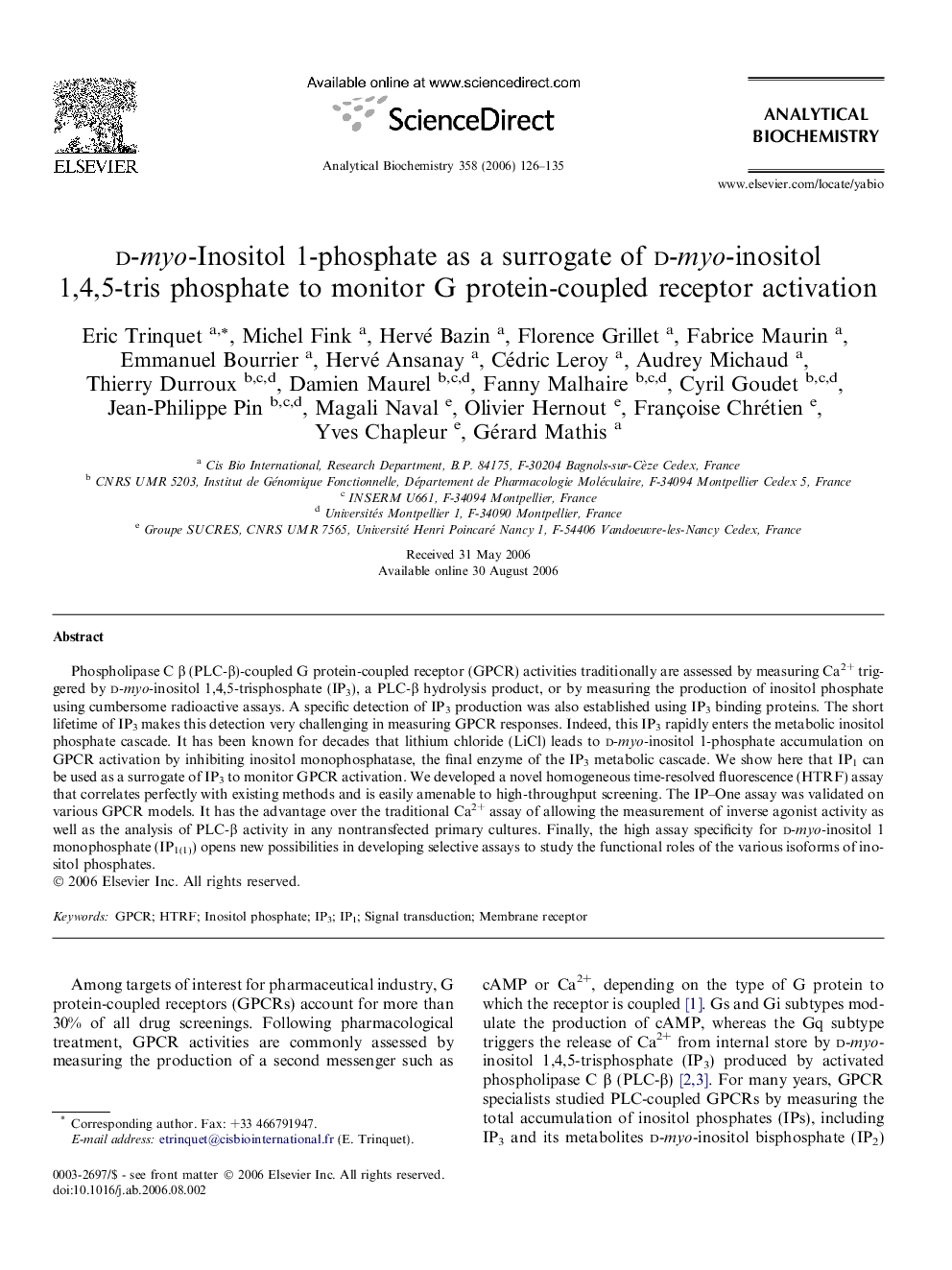| Article ID | Journal | Published Year | Pages | File Type |
|---|---|---|---|---|
| 1177465 | Analytical Biochemistry | 2006 | 10 Pages |
Phospholipase C β (PLC-β)-coupled G protein-coupled receptor (GPCR) activities traditionally are assessed by measuring Ca2+ triggered by d-myo-inositol 1,4,5-trisphosphate (IP3), a PLC-β hydrolysis product, or by measuring the production of inositol phosphate using cumbersome radioactive assays. A specific detection of IP3 production was also established using IP3 binding proteins. The short lifetime of IP3 makes this detection very challenging in measuring GPCR responses. Indeed, this IP3 rapidly enters the metabolic inositol phosphate cascade. It has been known for decades that lithium chloride (LiCl) leads to d-myo-inositol 1-phosphate accumulation on GPCR activation by inhibiting inositol monophosphatase, the final enzyme of the IP3 metabolic cascade. We show here that IP1 can be used as a surrogate of IP3 to monitor GPCR activation. We developed a novel homogeneous time-resolved fluorescence (HTRF) assay that correlates perfectly with existing methods and is easily amenable to high-throughput screening. The IP–One assay was validated on various GPCR models. It has the advantage over the traditional Ca2+ assay of allowing the measurement of inverse agonist activity as well as the analysis of PLC-β activity in any nontransfected primary cultures. Finally, the high assay specificity for d-myo-inositol 1 monophosphate (IP1(1)) opens new possibilities in developing selective assays to study the functional roles of the various isoforms of inositol phosphates.
